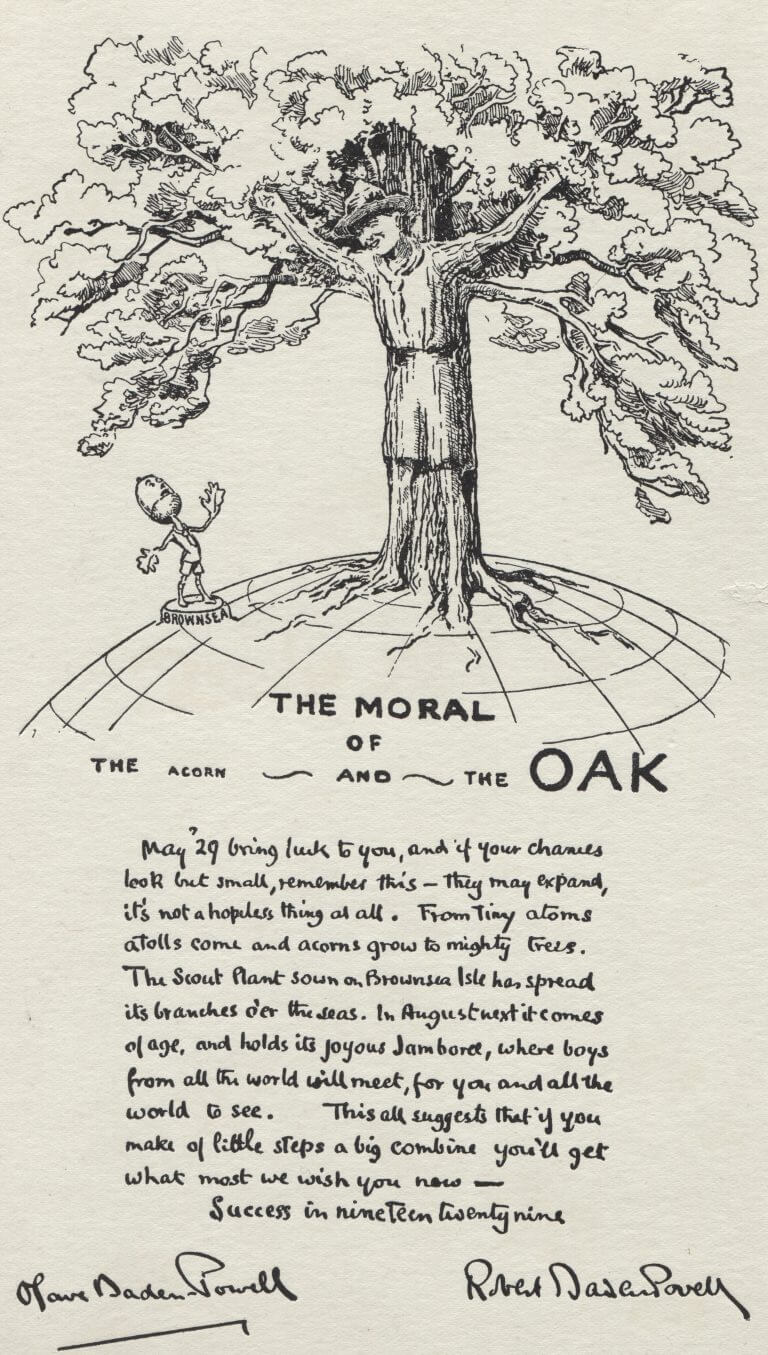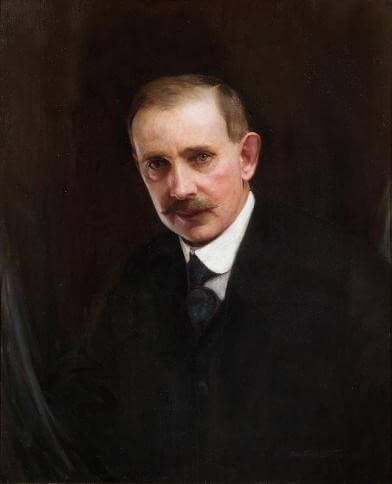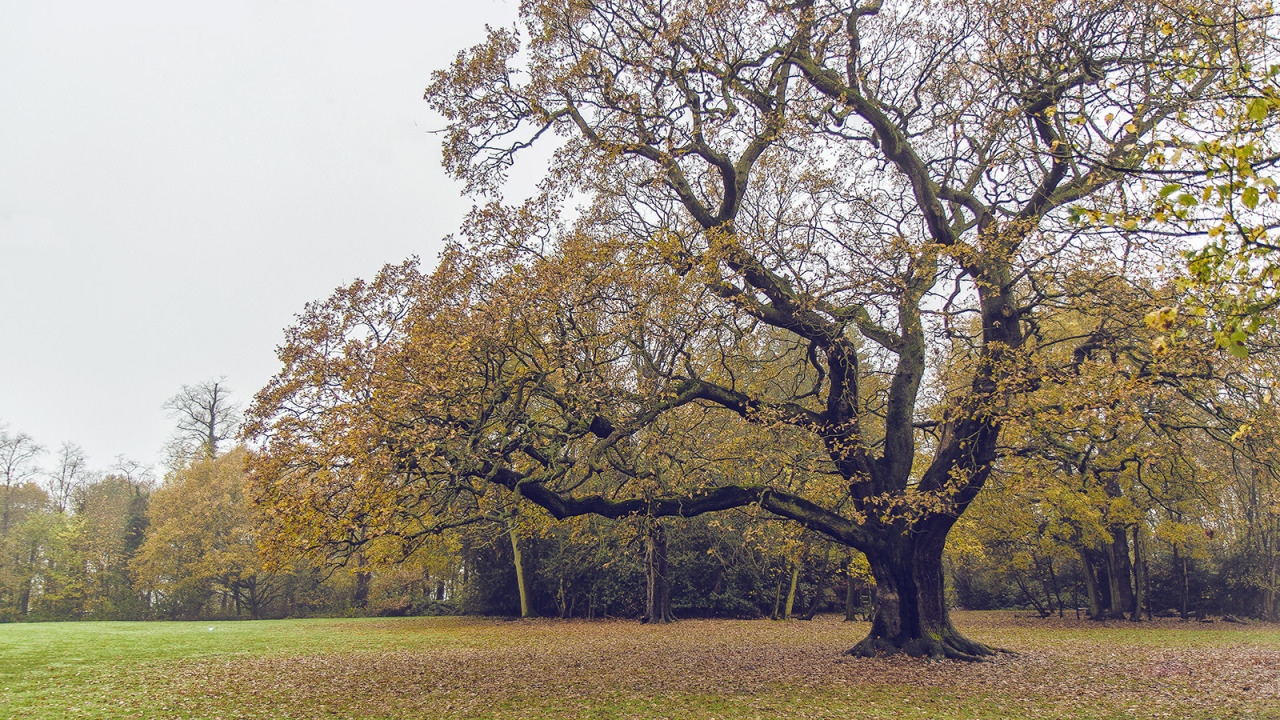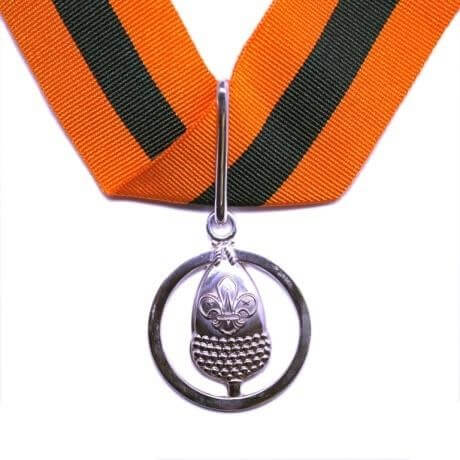The Gilwell Oak: Exploring our roots
The Gilwell Oak: Exploring our roots
The Gilwell Oak has become renowned throughout the world. Scouting’s founder, Robert Baden-Powell used the oak tree as an analogy for the growth and development of Scouting. He referred to the Brownsea Island experimental camp, run for 20 boys 1907, as the acorn from which the oak tree of Scouting grew.

It is Gilwell’s Scouting activity which led to the tree’s iconic status. In 1919 Scouting was going from strength to strength with over 205,000 youth members. Not all of these young people were able to get the most out of Scouting due both to a lack of facilities and leaders.
A Scottish Scouting volunteer, William de Bois Maclaren, witnessed East London Scouts struggling with their activities due to a lack of outdoor space. He donated £7,000 to buy land for a Scout campsite; Gilwell Park was found and purchased.

The first Scouts arrived on Maundy Thursday 1919 to start preparing the derelict site for use. By July a campsite was established alongside a training centre for a much-needed new generation of leaders who would take on the mantle of those lost to the First World War. The first training course ran the following September, overlooked by the oak. This event continues to be commemorated every year by “Reunion” held to celebrate the contribution of the 150,000 Scouting volunteers active in the UK today.

The current Gilwell Oak is in fact the second to bear this name. The previous one was located in Branchet Field. Maps from the 1950s show this change, the current Gilwell Oak sits on the edge of the Training Ground, the area in which Scout volunteers would stay to complete the residential aspect of their training.

The training offered at Gilwell Park was the first of its kind, Scouts from around the world attended training at Gilwell. On their return home many set up their own training centres to pass on their learning. In this way the legend of Gilwell spread around the world and the idyllic scene of Scouts taking shelter from the summer sun (or rain) under the branches of the Training Ground’s most iconic tree became well known.
In 2017 the Gilwell Oak’s amazing story led to it winning the title of The Woodland Trust’s UK Tree of the Year. Winning the award enabled an in-depth survey of the tree to be carried out. It helped us understand more about its health and age.
The result was that the tree is remarkably healthy for its age which is estimated to be about 350 years old. This information also finally puts to rest the myth that Essex highwayman Dick Turpin once hid in the tree. As the Oak would have only been around 40 years old when Turpin lived in the area it would not have been big enough to provide much shelter.


